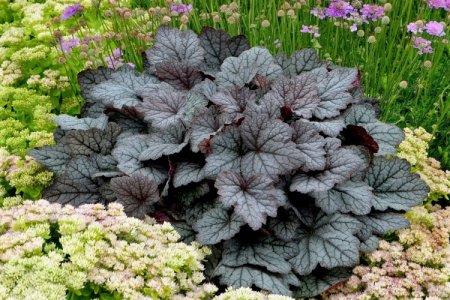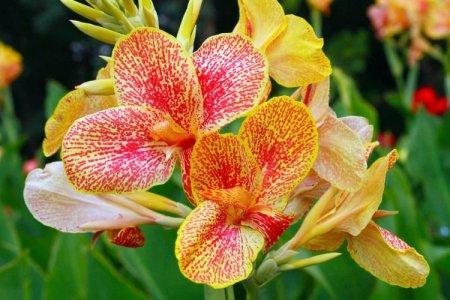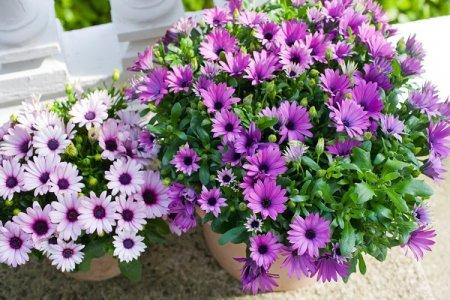
Think calibrachoa resembles a petunia? And there is! These flowering bushes are really close relatives. And if you need an ampelous perennial for a flowerpot or garden, calibrachoa is just your option!
general information
Oddly enough, calibrachoa belongs to the nightshade. She came to us straight from South America, and since then has become insanely popular for decorating plots and balconies. For a long time it was believed that this is a species of petunia, but about 30 years ago, scientists proved that they have a completely different DNA structure.
The flowers are not too large, up to a maximum of 3 cm. But there are so many of them, and they cover the crown so densely that it does not matter. Moreover, one of the most popular varieties is called "a million bells".
Stems and shoots of calibrachoa are rather flexible and long, and closer to the ground they gradually become lignified. The leaves are small and slightly fleecy, with a simple oblong shape. The most common shade of buds is purple, but among the breeding varieties there are many white, yellow, red, orange, pink and even blue varieties.

Calibrachoa species
Among calibrachoa, there are the most beautiful simple and double varieties. In the first case, the buds bloom with beautiful bright bells, including variegated ones. And for double flowers, the petals are collected in several rows.
Aloha
An extensive and varied series, which includes the most spectacular color varieties - purple, raspberry, yellow and pink. Bushes grow up to 45 cm.

Kalita
The most lush and violent flowering on branching shoots should be sought in this particular variety. This is the best view for arid and hot regions.

Cabaret
This series is notable for its luxurious flowering even with a lack of light. If you do not form and cut off such a bush, the ampelous shoots stretch up to 1 m.

Hula
A magnificent ampelous variety that pleases with flowering until the second half of autumn. In addition, there are the most original variegated colors.

Cancan
Very hardy ornamental bushes bloom profusely even under unfavorable conditions. This is the best option for beginners.

Calipetitis
These are very tiny representatives of their kind, no more than 20 cm. But this is offset by a very high density of the bush and early flowering. A good option for flowerpots.

Chameleon
The main feature of this group is its unique coloration. During the season, spotted petals can change their color to an even more bizarre one.

Calibrachoa care
Among plants suitable for beginners, calibrachoa will definitely fall into the top ten. The plant is completely unpretentious and does not cause trouble.
Temperature
Frosts are almost the only thing that the southern calibrachoa cannot tolerate. Therefore, it is possible to plant plants in the ground or take them out into the street only when the temperature has already settled down to about 22 degrees.

Lighting
Be sure to choose sunny areas or similar windows. But remember to avoid drafts and strong winds. At lunchtime, when the sun is the most aggressive, it is better to shade the flowers or bring them into the room.

Watering
Watering calibrachoa is only worthwhile as the soil dries up. The plant is very sensitive to waterlogging, which easily provokes the appearance of fungus and rot. Be sure to use warm water and water the flower gradually. Better even in a few runs a little.

The soil
Calibrachoa requires a lot of resources for abundant flowering, so the soil must be loose and nutritious. If you are preparing the mixture yourself, add a little lime to regulate the acidity. When planting in a pots, one bush needs about 2.5 kg of soil.

Fertilizers and feeding
Be sure to feed calibrachoa with mineral fertilizers every 7-10 days.It is very convenient to use ready-made mixtures in liquid form or in granules. In addition to phosphorus and potassium, the flower will need iron and sodium.

Pruning
You can pinch the plant and carefully trim the stretching shoots to form a beautiful ball. This is best done in the spring or when transplanting outdoors.

Wintering
If you want to save a garden bush for the next year, you need to carefully dig it out before the cold weather and transplant it into a spacious pot. Leave the calibrachoa to winter in a cool place at about +12 degrees without watering, but with good and long-term lighting.

Planting and breeding
Calibrachoa reproduces well as seeds, especially if first soaked briefly in a growth promoter. Plant them in containers or directly into peat tablets and leave them under a film in good light. Keep in mind that not all seeds will sprout, so they can be planted tightly.
Do not allow the soil to dry out in the greenhouse, and in a week the first shoots will appear. And after 1.5 months you can gradually plant them in flowerpots or prepare them for transplanting into open ground.
An adult plant can be propagated by cuttings: it preserves varietal qualities much faster and accurately. In late spring, cut off healthy top shoots about 7 cm long, remove the bottom leaves and plant them in nutritious moist soil. They will soon take root and after about 2 months they can be transplanted into the garden.

Pest and disease control
Due to the density of the ornamental bush, during waterlogging and hypothermia, calibrachoa easily suffers from fungi, powdery mildew and black leg. Be sure to remove all suspicious areas, and it is better to destroy a too sick flower completely with an earthen lump. Use fungicides and dry the ground.
The main pests are thrips and aphids. It is difficult to notice them, but they actively eat leaves. In addition, whiteflies and spider mites can hide in the depths. Complex insecticides will help you cope with this scourge!

Calibrachoa - photo
Calibrachoa is always interesting to watch, because literally hundreds of flowers can descend from one hanging basket. Look!




























